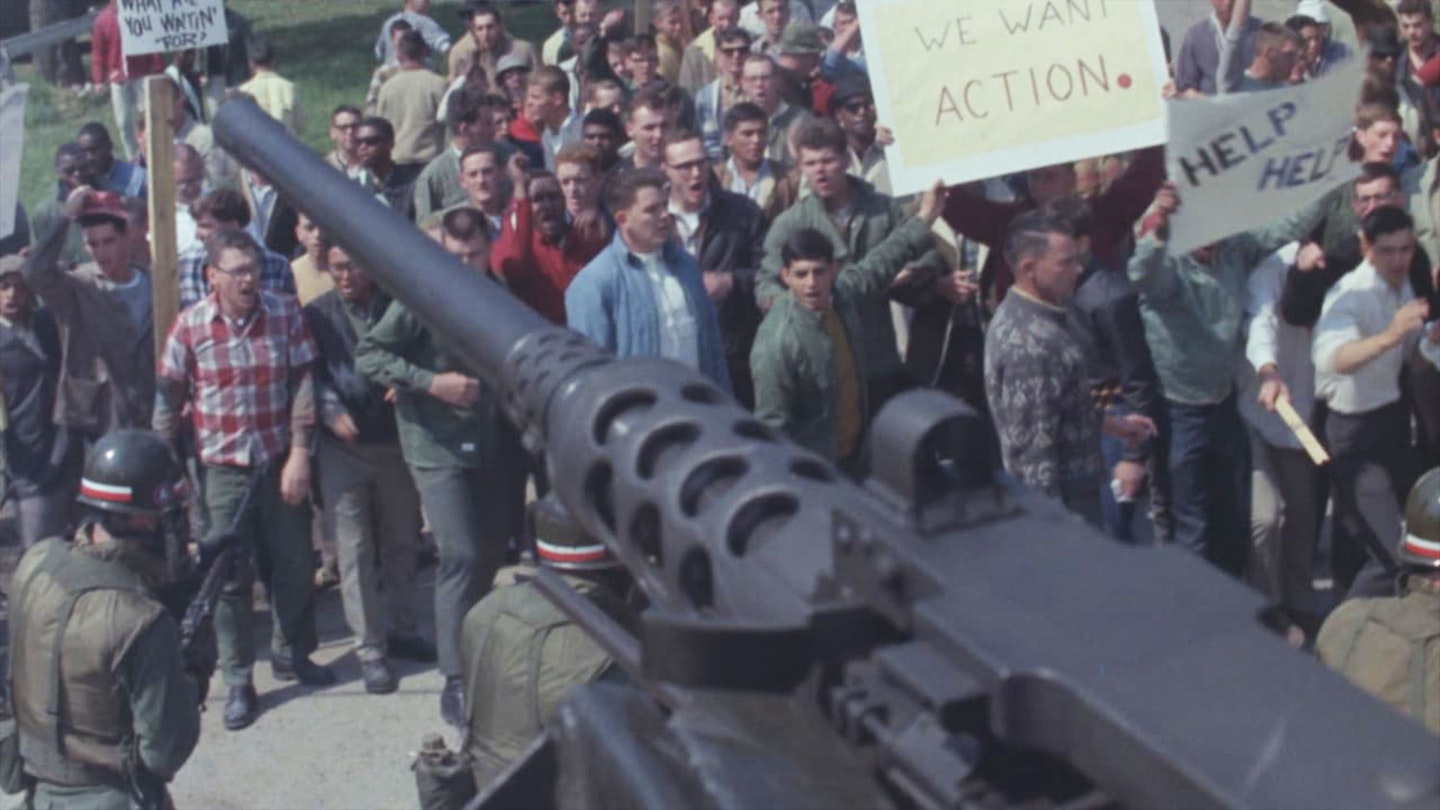In the years since the George Floyd-inspired protests of 2020, America has been locked in an intense conversation with itself over how law enforcement works in a fair society. Before ‘Defund The Police’ ever even reached hashtag supremacy, filmmaker and artist Sierra Pettengill began work on a documentary that works as a kind of mini origin story of that national conversation, exposing a wild pocket of American political history — told here entirely through archive footage.

Riotsville is an absolute gift of a story to a canny documentary maker like Pettengill. In the 1960s, after news footage of civil disobedience shocked middle America, the federal government created two fake towns on military bases (one base, the film drily notes, was named for a slave plantation, another for a Ku Klux Klan leader). Within these fake towns, which became known as ‘Riotsvilles’, anti-war and anti-racism protests were staged by the military to learn best tactics for dispersing crowds with extreme force.
Riotsville, USA is full of choices like this: loaded with meaning, and rallying cries, and rage.
The cartoonish primary colours of the buildings and the play-acting of the soldiers as protesters lends it all an extremely surreal feel. But the real-world impacts of the experiment are never far away: police who had trained at a Riotsville went on to use their new tactics and deadly new toys to quell the unrest in the majority-Black neighbourhoods of Miami, during the contentious 1967 Republican National Convention (which nominated Richard Nixon, and his ‘law and order’ policies, as Presidential candidate).
This thesis, that American policing policy is founded on essentially racist cornerstones, means the film is unashamedly polemic. Poetic narration, written by Tobi Haslett and coolly delivered in voiceover by Charlene Modeste (“What does it look like when the state is forced to face the consequences of its own callousness?”, she asks rhetorically at one point) gives it an Adam Curtis-esque video essay quality. But that only makes it more compelling.
Some artistic flourishes prove more distracting than enhancing — a strange morph effect and extreme close-up of newsprint don’t hit quite as hard as they should. Mostly, though, the archive footage speaks for itself, storytelling through editing and deep-reaching research, bolstered by grim statistics and facts in stark, black-and-white intertitles. After astonishing footage of a community being excessively tear-gassed by their own state, we are treated to a cheesy fly spray commercial from the time. Riotsville, USA is full of choices like this: loaded with meaning, and rallying cries, and rage.
